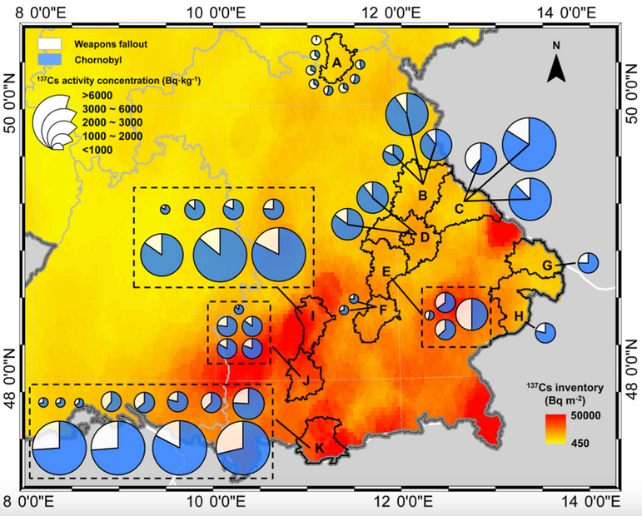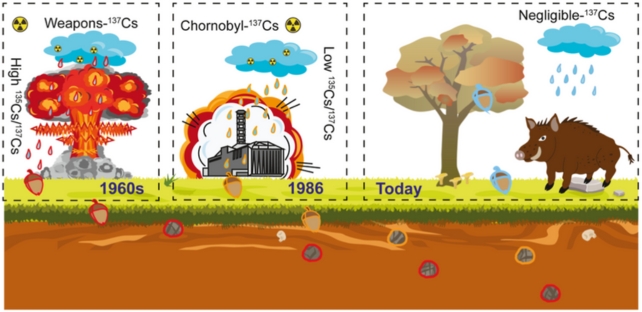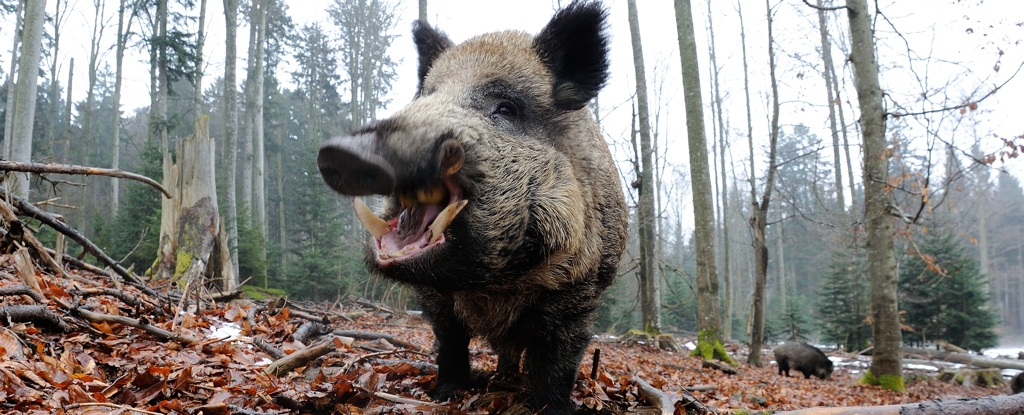Products You May Like
Wild boars in southeastern Germany are known to contain high levels of radioactive cesium, which has been widely attributed to the 1986 Chernobyl disaster.
But radioactivity levels have decreased in other animals while mysteriously persisting in the boars – a peculiar behavior known as the “wild boar paradox”.
New research shows nuclear weapons tests from the mid-20th century are also responsible, and scientists say both sources continue to contaminate the boars via their diet.
The stockily built, tusked wild boars (Sus scrofa) appear healthy, but the dangerously high levels of radioactive cesium found in some of them have reduced hunting of the animals for their meat and contributed to overpopulation issues.
“Our work reveals deeper insights into the notorious radio-cesium contamination in Bavarian wild boars beyond the total radionuclide quantification only,” radioecologist Felix Stäger from Leibniz University Hannover in Germany and colleagues write in their paper.
In the aftermath of a nuclear accident or explosion, radioactive materials released into the environment pose a significant threat to ecosystems. After the Chernobyl accident 37 years ago, there was an increase in radioactive cesium contamination, particularly cesium-137, which has a half-life of about 30 years.
But a much more stable isotope – cesium-135 – has a half-life of over 2 million years, and can also be created via nuclear fission.
According to prior research, the ratio of cesium-135 to cesium-137 can determine where the cesium came from; a high ratio indicates nuclear weapon explosions, while a low ratio points to nuclear reactors as the likely source.
The team set out to analyze cesium levels using 48 samples of wild boar meat collected by hunters during 2019–2021, from 11 regions of Bavaria.
A high-purity gamma-ray detector was used to measure the activity of cesium-137, and high-tech mass spectrometry compared the amount of cesium-135 to that of cesium-137.
Radioactive cesium levels in 88 percent of the meat samples tested were higher than Germany’s legal threshold.

Using the ratio of cesium-135 to cesium-137, the researchers determined that nuclear weapons testing was responsible for 12–68 percent of the contamination in those samples that surpassed the safe consumption limit.
“All samples exhibit signatures of mixing,” write the researchers. “Nuclear weapons fallout and [Chernobyl] have mixed in the Bavarian soil, the release maxima of which were about 20−30 years apart,” the team writes.
Despite Chernobyl being the main source of cesium in wild boars, about a quarter of the samples showed significant enough contributions from weapons fallout to exceed the regulatory limit without even taking the Chernobyl contribution into account.
Wild boars’ diets, which include underground truffles, have absorbed varying levels of contamination from both sources, which has contributed to the animals’ persistent radioactivity.

Nuclear power is making a comeback as a low-carbon potential solution to humanity’s insatiable appetite for energy in the face of climate change. The authors suggest research is important to understand its potential impact, which their study has given some insight into.
Future nuclear accidents or explosions, the team says, could increase the current contamination of these animals and have repercussions on food safety immediately and for decades.
“This study illustrates that strategic decisions to conduct atmospheric nuclear tests 60−80 years ago still impact remote natural environments, wildlife, and a human food source today,” the authors conclude.
The study has been published in Environmental Science & Technology.
